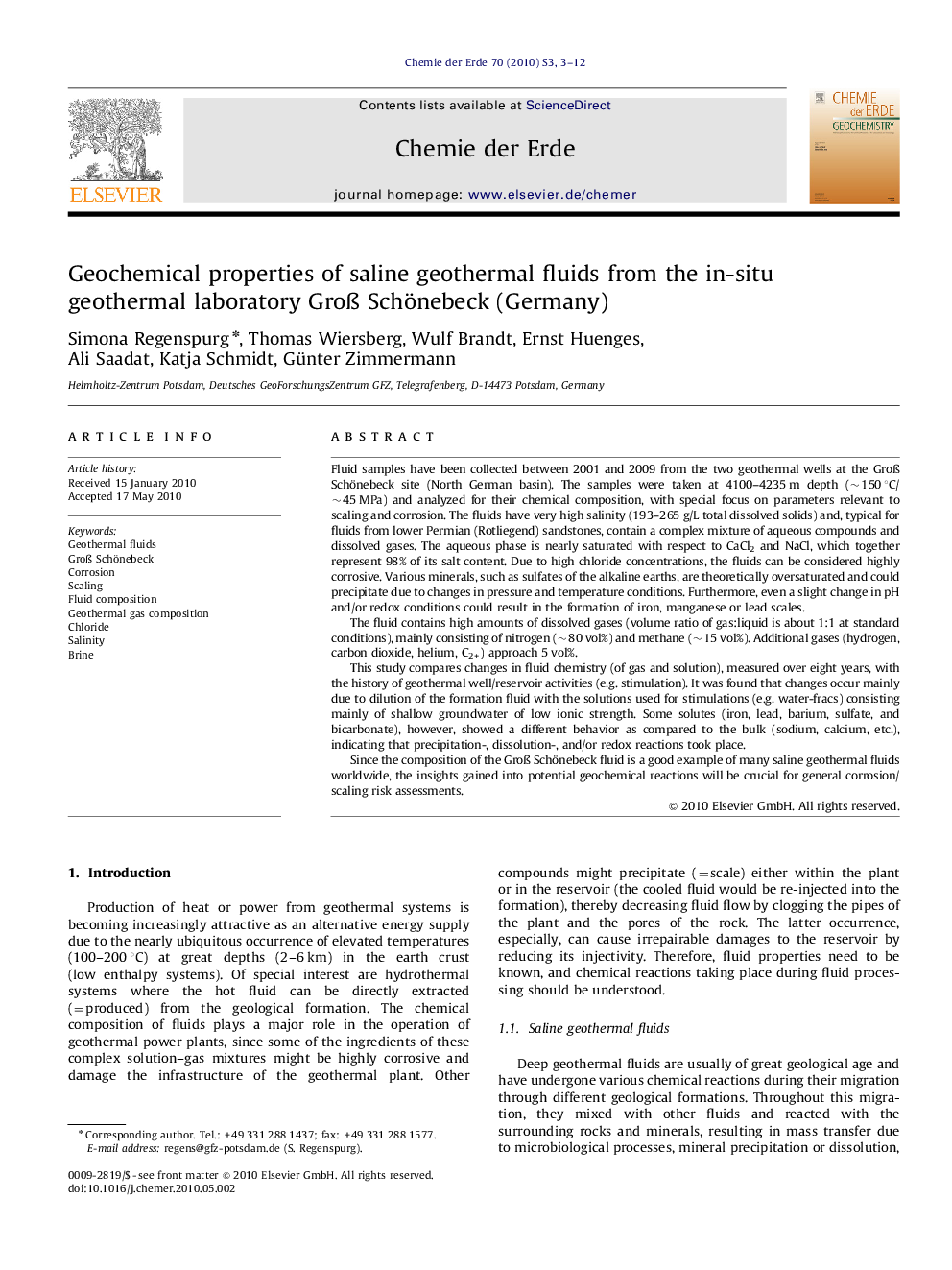| کد مقاله | کد نشریه | سال انتشار | مقاله انگلیسی | نسخه تمام متن |
|---|---|---|---|---|
| 4407098 | 1307347 | 2010 | 10 صفحه PDF | دانلود رایگان |

Fluid samples have been collected between 2001 and 2009 from the two geothermal wells at the Groß Schönebeck site (North German basin). The samples were taken at 4100–4235 m depth (∼150 °C/∼45 MPa) and analyzed for their chemical composition, with special focus on parameters relevant to scaling and corrosion. The fluids have very high salinity (193–265 g/L total dissolved solids) and, typical for fluids from lower Permian (Rotliegend) sandstones, contain a complex mixture of aqueous compounds and dissolved gases. The aqueous phase is nearly saturated with respect to CaCl2 and NaCl, which together represent 98% of its salt content. Due to high chloride concentrations, the fluids can be considered highly corrosive. Various minerals, such as sulfates of the alkaline earths, are theoretically oversaturated and could precipitate due to changes in pressure and temperature conditions. Furthermore, even a slight change in pH and/or redox conditions could result in the formation of iron, manganese or lead scales.The fluid contains high amounts of dissolved gases (volume ratio of gas:liquid is about 1:1 at standard conditions), mainly consisting of nitrogen (∼80 vol%) and methane (∼15 vol%). Additional gases (hydrogen, carbon dioxide, helium, C2+) approach 5 vol%.This study compares changes in fluid chemistry (of gas and solution), measured over eight years, with the history of geothermal well/reservoir activities (e.g. stimulation). It was found that changes occur mainly due to dilution of the formation fluid with the solutions used for stimulations (e.g. water-fracs) consisting mainly of shallow groundwater of low ionic strength. Some solutes (iron, lead, barium, sulfate, and bicarbonate), however, showed a different behavior as compared to the bulk (sodium, calcium, etc.), indicating that precipitation-, dissolution-, and/or redox reactions took place.Since the composition of the Groß Schönebeck fluid is a good example of many saline geothermal fluids worldwide, the insights gained into potential geochemical reactions will be crucial for general corrosion/scaling risk assessments.
Journal: Chemie der Erde - Geochemistry - Volume 70, Supplement 3, August 2010, Pages 3–12